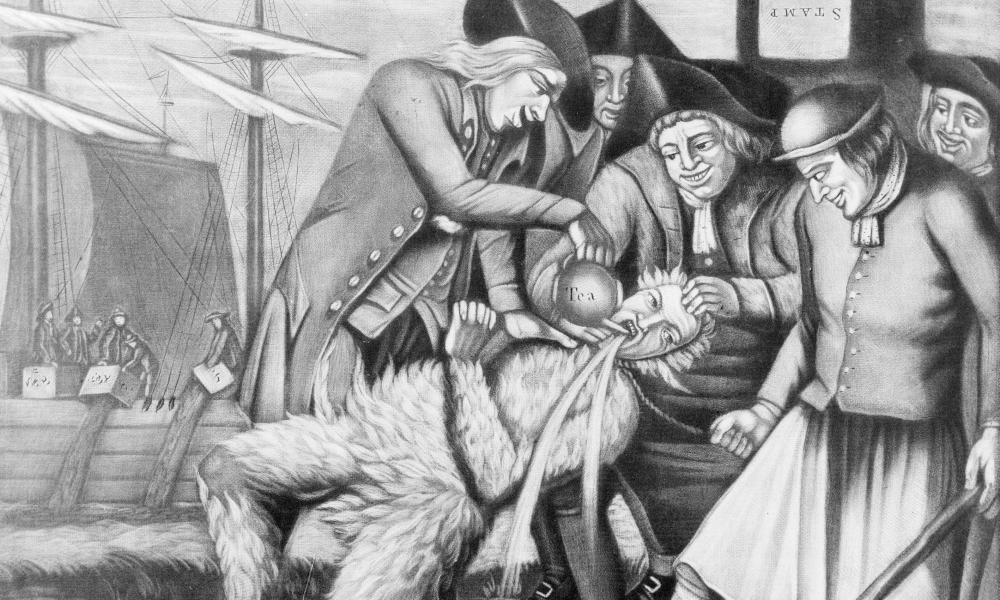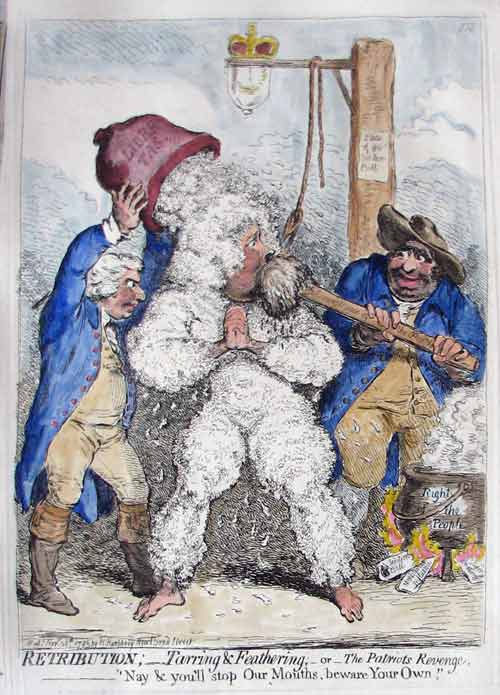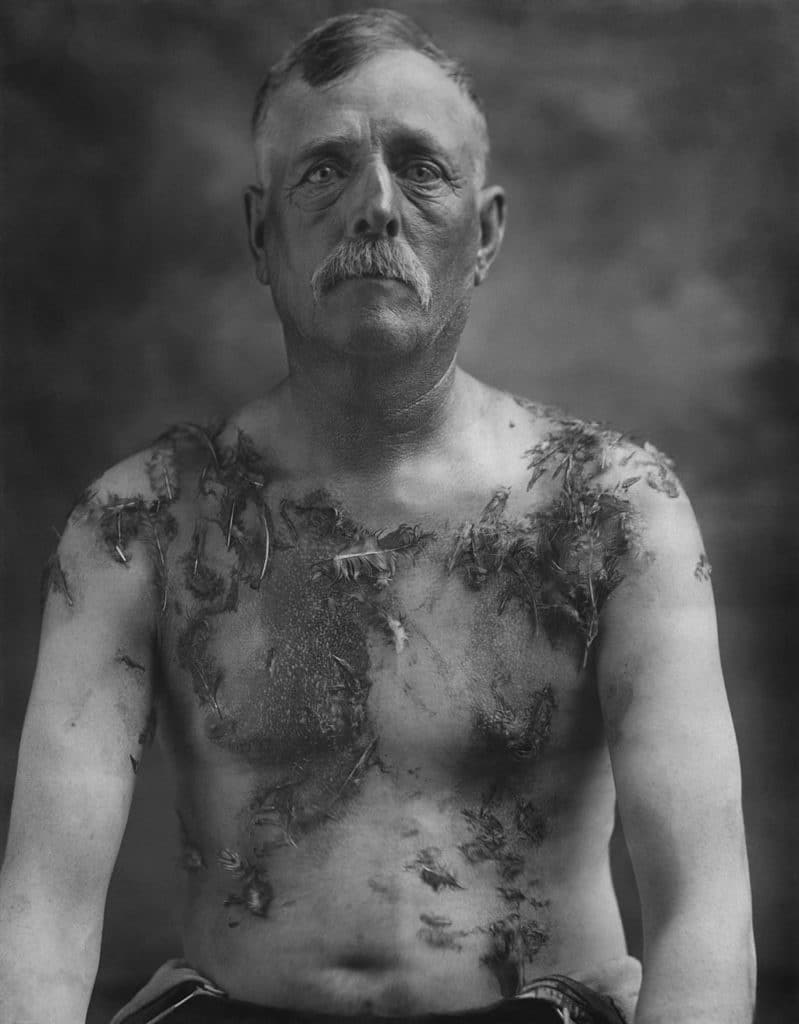Last updated on January 12th, 2023 at 10:35 pm
Tarring and feathering is a brutal form of punishment used in the past to discipline people who had done something wrong. This practice has a strange and dark history, and it’s still unclear where it originated.
Let’s explore the origins of tarring and feathering and why this punishment was doled out.

What Was Tarring And Feathering?
Tarring and feathering was a form of torture and humiliation used to punish people for a variety of offenses. The medieval process involves covering a person in hot tar and feathers, which can cause extreme pain and suffering.
Usually, the offender was stripped from the waist up, tar was applied to their body, and then they were covered in feathers.
While the goal was to intimidate and humiliate, victims often endured great physical pain. Depending on the crowd’s mood, tarring and feathering could also be a precursor to further violence.
Such violence may have included public whipping, branding, or even lynching. The practice was never an official punishment, but public figures like Richard I of England used the sentence on those convicted of theft on the voyage to the Holy Land.
Tarring and feathering were used in both America and Europe, although more common in the colonies where, to the early 1980s, tarring and feathering was a form of unofficial justice.
Contrary to popular opinion, tarring and feathering were rarely fatal, but removing them was excruciating. Often, victims would suffer significant burns on their skin, and removing the tar would pull out hair and pieces of skin, exposing them to potential infections.
Historical Roots Of Tarring And Feathering
The first recorded instance of tarring and feathering occurred in 1189 at the hands of Richard I, when he ordered a group of thieves tarred and feathered as punishment for their crimes.
Tarring and feathering continued to be used sporadically throughout history to humiliate and degrade offenders. However, the practice reached its peak in the 18th century when it was used frequently by the colonists in America.

Traditionally, the practice required Pine Tar and Feathers (which filled most pillows at the time). At the time, American colonists would use whatever materials they could to punish those they thought deserved it. For example, colonists would use syrup and cattails when they couldn’t find conventional materials.
While the origins of tarring and feathering are relatively straightforward, the reasons behind their use are still somewhat of a mystery. Some historians believe that the act was meant to humiliate offenders in front of their community and intimidate them. In contrast, others believe it was simply a way to inflict pain and suffering.
Notable Examples of Tarring and Feathering
While there were countless examples of colonists tarring and feathering their fellow Americans, some notable cases stand out.
In 1773, John Malcolm, a well-known British Loyalist, and Comptroller for the Customs Service, had the unfortunate experience of being tarred and feathered twice.
The first incident occurred in Maine and the second in Boston in 1774. The second time was particularly severe, causing bits of skin on his knees to be painfully removed.
Another well-known victim of this humiliating practice was the Mormon prophet Joseph Smith. In March of 1832, an anti-Mormon mob dragged him from his bed and tarred and feathered him.
However, this may have only covered why he was tarred and feathered. The real reason is likely because he was intimate with a younger girl from his community. During his ordeal, the kidnappers badly beat him before covering him in tar and feathers.
Nobody was safe, including clergy members. Historically, the community held them in high regard and expected a certain caliber of behavior from them. Many were covered in pitch and feathers and sent on their way for simple acts like public drunkenness.
Why Was Tarring And Feathering Used?
While tarring and feathering have largely fallen out of use in recent years, there are still some instances of it occurring. For example, in the 1900s, tarring and feathering persevered as a form of “mob justice” when no official law was around to punish offenders.
There are a few theories on why tarring and feathering became a form of punishment. One view is that it was a deterrent for others thinking about committing a crime. If they saw what happened to the offenders, they would be less likely to commit a crime themselves.

Another theory is that it was simply a way to inflict pain and suffering on the offender. This was especially true in cases where the offender had already been tarred and feathered once before. The experience would be even more painful and degrading the second time.
The last theory is people used that tarring and feathering to destroy the offender’s reputation in front of their community. It was influential in small towns where everyone knew each other. By humiliating the offender, they were also shaming their family and friends.
Whatever the reasons behind its use, tarring and feathering is a brutal act with a dark and strange history. While communities worldwide may not use it as frequently as it once was, it is a cruel form of torture. Moreover, it embarrasses African Americans and civil rights activists peacefully protesting.
The History of Tarring and Feathering
Tarring and feathering is a relic of the past, but it’s a fascinating example of how creative people can be when they want to send a message. This severe form of public humiliation was once used to punish everything from political dissenters to petty criminals.
Thankfully, it’s no longer in practice today. But it’s still interesting to think about how such a strange and seemingly barbaric practice could have ever been considered acceptable. Hopefully, we can learn from the mistakes of our ancestors and avoid such cruel and unusual punishments in the future.


Was used during the Spanish Civil War, and after WW2 for women who had collaborated, or slept with, the Germans. Also in Italy. Usually used against women in that period, but not only.
Of course this–> “One view is that it was a deterrent for others thinking about committing a crime.”
Not sure why this even needs to be stated. This is why the justice exists at all. There are consequences to bad actions.